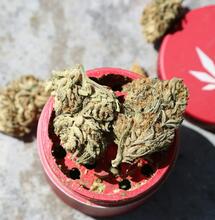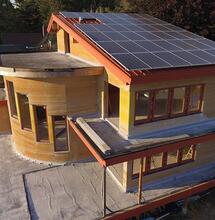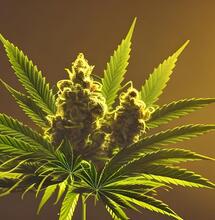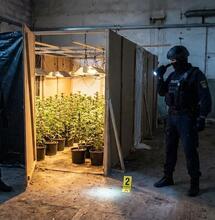Can Cannabis Help with Sustainability?
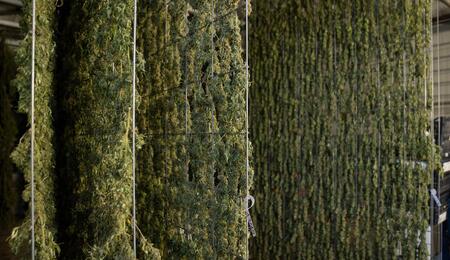
There are several industries which Cannabis can reinvent into becoming more sustainable and greener. For example, companies that work with hemp textiles, hemp paper, biodegradable hemp materials, or hemp biofuels positively impact the environment. If the competitive advantage of cannabis grows in these sectors it can entirely change them. In addition, cannabis crops can clean soils of harmful contaminants and capture carbon from the atmosphere. But while there are many environmental benefits to cannabis and hemp, the industry also has some sustainability issues that it needs to work through.
Environmental Benefits of Cannabis and Hemp
Cannabis and hemp can help reshape entire industries to go greener. Crops can also be used for soil cleansing and carbon sequestration. Here's how cannabis can help with sustainability.
Biofuels
Hemp biofuels have the potential to reinvent the energy market. They can be utilized to power engines and biomass power plants. Hemp seeds can be used to manufacture biodegradable hemp biodiesel, which can be used for diesel engines. Also, the cellulose content from hemp plants can be treated and converted into sugars through a process called cellulolysis. The sugars are then fermented into ethanol, which makes up about 10% of gasoline.
Paper production
Industrial hemp can be processed into hemp paper, a greener alternative to cutting down trees for the purposes of paper production. Hemp grows much faster than trees. An acre of hemp can support the manufacture of as much paper as 5 to 10 acres of trees over the period of two decades. Hemp paper is also durable and can be recycled more times than paper coming from trees.
Fashion and Clothes
Hemp fabric is one of the strongest organic fabrics in the world, three times stronger than cotton. Hemp fabrics and textiles are also 100% biodegradable, and hemp crops require less water for cultivation than cotton. As an eco-friendly material, hemp has been increasingly accepted among prominent fashion designers and luxury fashion brands in recent years. Fashion is the second most polluting industry on the planet after oil. The manufacture of hemp-made clothing articles and accessories directly contributes to a more sustainable fashion sector.
Construction
Hemp bricks or blocks are manufactured via a low-energy consuming process that uses 100% natural materials (hemp and limestone). Hemp's qualities in building are multifaceted. Hemp bricks have an excellent ability to diffuse heat accumulation, making it a building material that naturally regulates room temperature. Besides insulation, hemp bricks do an amazing job with humidity regulation and acoustic isolation. Hemp might not be a building material as strong as conventional steel or concrete. Still, it's the way forward to natural material building.
Carbon capture
Hemp can be utilized to capture atmospheric carbon, which is important for reducing the adverse effects of greenhouse gases. The cultivation of industrial hemp can absorb up to 15 tonnes of CO2 per hectare (up to 6 tonnes per acre). That's better than forests, which can capture up to 6 tonnes of carbon per hectare (or approx. 2.5 tonnes per acre).
Improving Soils
Cannabis is a superior absorbent. The roots of the plant can take in any contaminants from the soil. This process is known as phytoremediation and has proven to be extremely useful for soils contaminated with harmful chemicals and metals, including lead and cadmium. Farmers in some European countries, such as Italy, are already using the exceptional phytoremediation qualities of hemp to cleanse soils from contamination.

Environmental Challenges with Cannabis and Hemp
While the environmental benefits of cannabis and hemp are significant, and they can help reshape entire sectors by reducing pollution and introducing a sustainability element, at an industry level, a number of sustainability issues need to be addressed with better laws and regulations.
Indoor Grow Energy Consumption
More than 40% of cannabis growers in the U.S. cultivate plants in indoor facilities, which consume massive amounts of electricity. Compared to outdoor cannabis plantations, indoor cannabis factories generate up to 100 times more carbon emissions. Facilities are packed with artificial lighting and technologies that automatically control temperature, humidity, ventilation, and carbon levels. The larger the facility, the bigger the burden on the power grid.
Transportation
Another sustainability issue that the cannabis industry faces is transportation. Most of the problems come from federal and state laws. Under federal law, it's prohibited to transport cannabis between states. As per state laws, in California for example, cannabis has several touchpoints before it reaches consumers. Farmers are required to transport their harvest to processors, then processors need to transport the product to distributors, and the chain continues with distributors transferring the cannabis goods to retailers. The entire transportation process creates a larger carbon footprint and air pollution than needed.
Watering
Like all other agricultural activities, the cultivation of cannabis and hemp does require significant amounts of water. The lack of regulation to limit water use for irrigation sometimes overwhelms water resources. Using an automated irrigation system that recaptures and reuses water would be a step in the right direction regarding water security. The other big issue is pollution created by the excess use of nutrients, pesticides, and insecticides. When the industry overwhelms the wastewater system, it again leads to more power consumption and increased emission of greenhouse gases.
Land Degradation
While cannabis crops can help improve the soil, poor planning for land use opens other issues. Land degradation from outdoor plantations sometimes jeopardizes entire ecosystems. The list of problems here ranges from drop in soil quality, release of pollutants and lack of testing for soil quality, all the way to landscape changes that result in soil erosion and nutrient loss. Focus on better regulations to protect the soils and widely adopting agricultural practices such as topsoil regeneration can bring improvements to this end.
Plastic
Plastic is a huge environmental issue for the whole planet. Unfortunately, with millions of pounds of plastic waste generated yearly, Cannabis has its share in plastic pollution. A lot of the time, the packaging of various cannabis products look like like they have extra layers on them which means more waste. Legal obligations sometimes demand that packaging features information such as health and safety warnings, and various product content details. Understandably this increases the volume of material needed for the packaging. Smarter designs as well as policy changes to reduce redundant parts of the packaging can serve as solutions to this problem.

_11zon.jpg)



